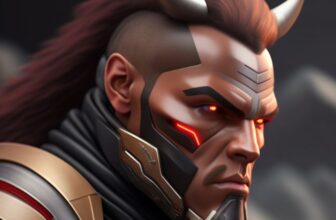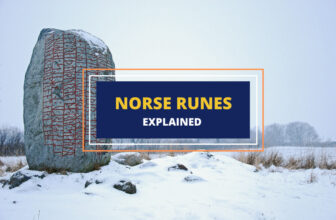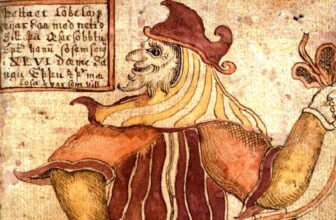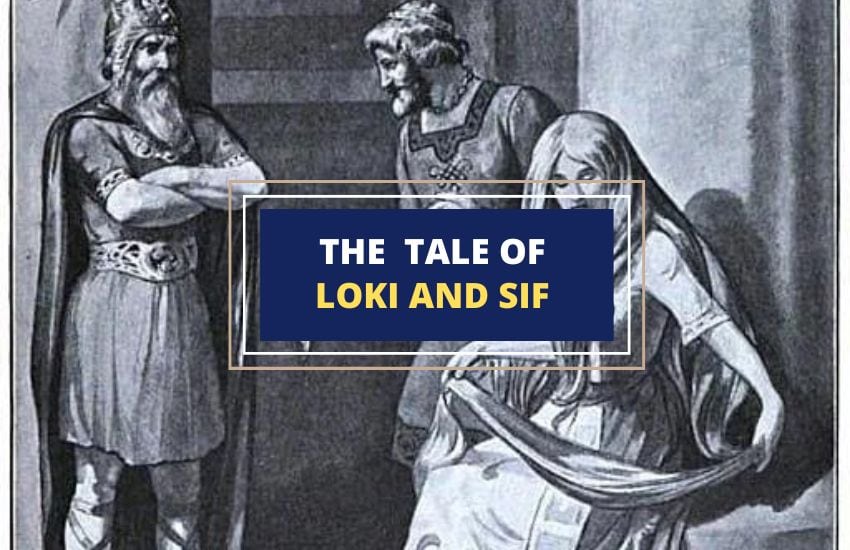
Table of Contents
In the mystical realm of Norse mythology, gods and goddesses hold unimaginable power and unfathomable secrets. One such tale involves the cunning trickster god Loki, and the earth goddess, Sif, whose story weaves together magic, deception, and divine intervention.
From the theft of Sif’s iconic golden hair to the creation of powerful weapons and the ultimate triumph of good over evil, the myth of Loki and Sif is a riveting adventure that has captured the imaginations of countless generations.
Who is Loki?
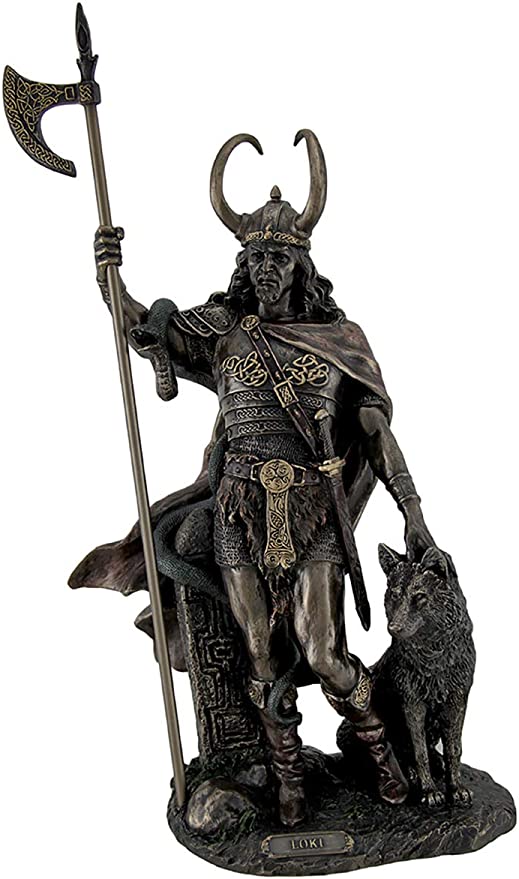
Loki is a prominent figure in Norse mythology, known for his cunning, mischievousness, and shapeshifting abilities. As a trickster god, he’s often portrayed as an unpredictable character who enjoys causing chaos and disruption among the gods and other beings.
Due to the oral nature of Norse mythology, there are various versions of Loki’s story. Some depict him as a giant, while others claim he belonged to the Aesir gods due to his lineage.
Despite being at odds with the gods due to his mischievous nature, Loki is frequently involved in their adventures. He can transform into various animals, such as a mare, seal, or salmon, and has a knack for trickery.
One story tells of how he disguised himself as a handmaiden to distract a giant while Thor retrieved his stolen hammer. In another tale, Loki tricked the goddess Idunn and led her outside Asgard, resulting in her kidnapping.
Loki’s most infamous act of mischief was his role in the death of Balder, one of Odin’s sons. He convinced Balder’s blind brother Hodr to throw a mistletoe dart at him, the only thing that could harm him, leading to Balder’s demise.
As punishment, Loki was bound to a rock with the entrails of one of his sons, and a serpent dripped venom onto his face until Ragnarok or the end of the world. Overall, Loki is a complex and multifaceted figure in Norse mythology, leaving a lasting impact on the stories and characters surrounding him.
Who is Sif?
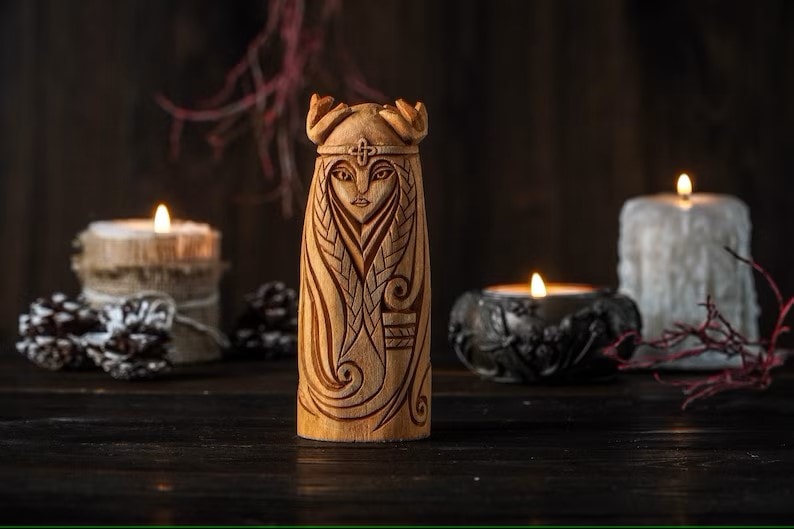
Sif, the goddess of fertility, agriculture, and the harvest was the second wife of Thor, the Norse god of thunder, strength, and war. Despite her prestigious position, there are few surviving stories about her in Norse mythology, and some scholars suggest that her legends may have been lost through the years.
One of the few stories that have survived about Sif centers around her long, golden hair, which was a defining feature of her beauty. She took great care to maintain it, and it was said to flow down her back like a “field of corn.” Thor used to boast about it to anyone who would listen.
Aside from her beauty, her hair was also a symbol of her identity as an Earth Goddess. Scholars interpret it as a representation of wheat, making her a counterpart to Thor, who represents the sky and rain. Together, they formed a divine fertility couple responsible for ensuring a bountiful harvest.
Sif and Thor had two children, a daughter named Þrúðr, meaning “strength,” and a son named Lóriði. Thor also had two sons with other women and acted as a stepfather to Sif’s son from her previous marriage, Ullr. Not much is known about Ullr, aside from his association with archery, hunting, and skiing, and his father’s identity remains a mystery.
The Myth of Loki and Sif
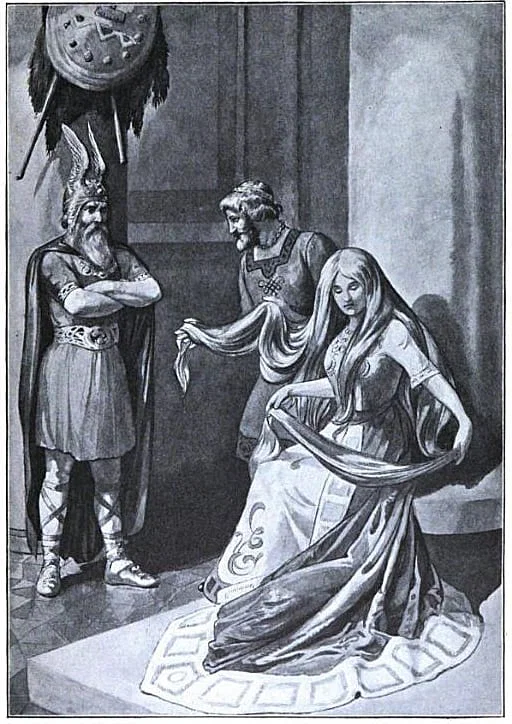
In the world of Norse mythology, Sif was known for her long golden hair, which was said to be her most beautiful feature. Loki, the god of mischief, was always looking for trouble and decided to play a prank on Sif. While she was sleeping, he sneaked into her chamber and shaved off all of her golden locks.
When Sif awoke and saw what had happened, she was heartbroken. Her hair was a symbol of her beauty and femininity, and without it, she felt like a different person. She refused to leave her chamber, causing the crops on Earth to suffer. Her husband Thor was furious when he saw Sif’s bald head and made his anger known by causing thunder to rumble on Earth.
1. Loki’s Trickery and the Dwarves of Svartalfheim
Thor soon discovered that Loki was the one responsible for Sif’s hair loss and threatened to break his bones unless he found a way to restore her hair. Loki decided to seek the help of the dwarves who lived in Svartalfheim, a land located beneath the earth’s surface.
Loki used his trickery to convince two dwarf brothers, Brokkr and Sindri, to create a new, even more, impressive hair for Sif. Brokkr and Sindri were master craftsmen and agreed to take on the challenge. Loki promised the dwarves a reward if they could create hair that was made of gold and could grow on its own just like natural hair.
2. The Creation of Magical Items
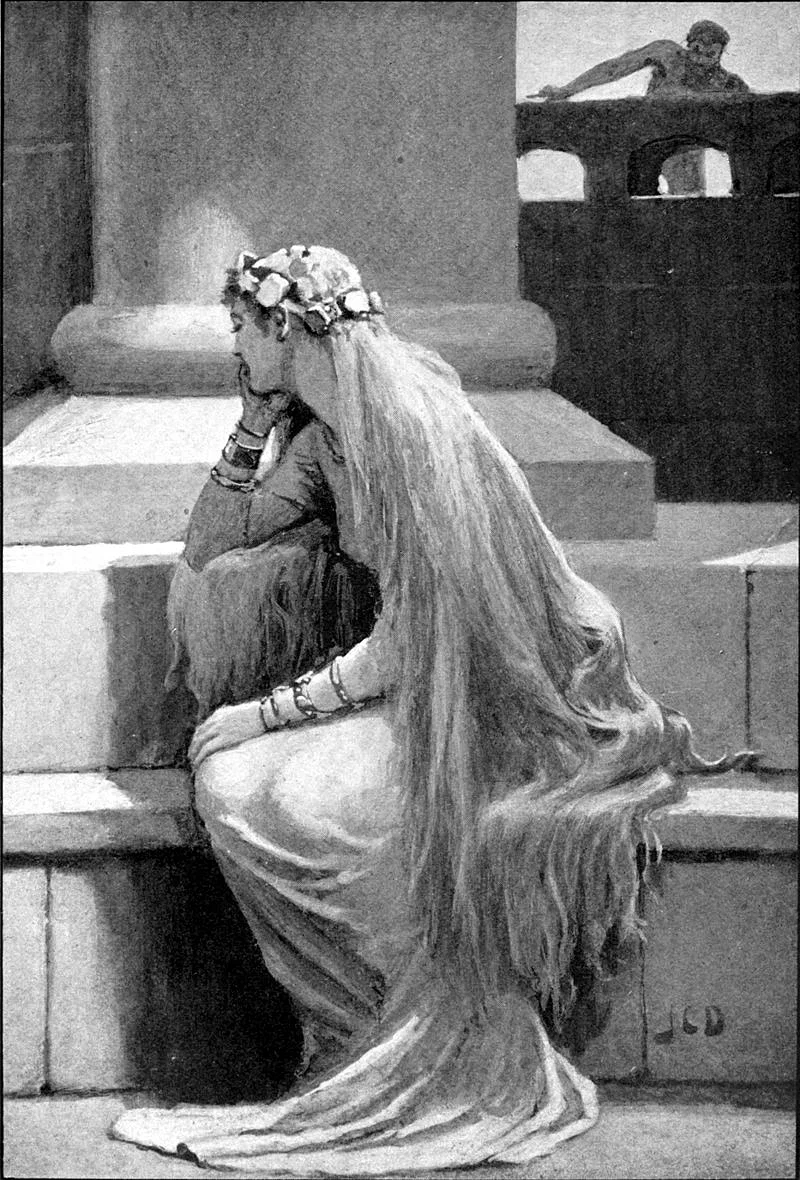
As Brokkr and Sindri worked, they also created five other magical items as part of a new wager with Loki. The first was Freyr’s Skidbladnir, a ship that could travel through air, water, or land and could be folded and placed in a pocket.
The second was Odin’s spear Gungnir, which never missed its mark. The third was Draupnir, a ring that could create nine copies of itself every ninth night. The fourth was a golden boar named Gullinbursti, which could travel over land, sea, and air, and its bristles glowed in the dark. The fifth and final item was Mjölnir, Thor’s famous hammer that could throw lightning bolts and always returned to his hand, no matter how far it was thrown.
3. Loki’s Bet and the Wager’s Outcome
Loki took the items to Asgard, where he presented them to the gods and goddesses. He boasted that no one could create better items, and the gods challenged him to a bet. Loki agreed to the terms, and the gods declared that the items should be judged by a neutral party. They chose the wise and powerful giant, Utgard-Loki, to judge the items.
Utgard-Loki examined the items carefully and declared that they were indeed impressive. He was particularly impressed with Mjölnir, the hammer created for Thor, which he declared to be the greatest of all. Utgard-Loki declared Loki to be the winner of the bet, but the other gods suspected that Loki had cheated in some way.
The story of Sif’s hair loss, the dwarves of Svartalfheim, and the creation of magical items is an important myth in Norse mythology. It shows the trickery and cunning of Loki, the loyalty and love of Thor for his wife, and the craftsmanship and skill of the dwarves. These legendary items played an important role in many of the stories and battles that followed, making them an integral part of Norse mythology.
Importance of Loki and Sif’s Myth

The myth of Loki and Sif is a captivating tale of trickery, consequences, and renewal in Norse mythology. It showcases the complex relationships between the gods, with Loki’s mischievous actions serving as a test to keep the gods from becoming complacent.
Sif’s golden hair, representing the sun’s warmth and light, is stolen by Loki, and her unhappiness at its loss is a metaphor for the sadness that can accompany the winter season.
This story serves as a cautionary tale, reminding us to prioritize our responsibilities over our vanity and to be mindful of our actions. Sif’s reluctance to go out in public because of her missing hair had a real impact on people’s ability to grow crops. Loki’s theft of Sif’s hair sets in motion a series of events that ultimately lead to his punishment and the restoration of Sif’s hair.
Despite the loss and difficult times, the myth emphasizes the cyclical nature of life and the potential for growth and renewal. Sif’s hair is ultimately replaced with a golden hair that can grow on its own, and Loki’s trickery leads to the creation of some of the most iconic magical items of the gods, including Thor’s hammer, Mjölnir.
The myth of Loki and Sif is a powerful story of consequences and renewal that has endured for centuries. It serves as a reminder to be mindful of our actions, to prioritize our responsibilities, and that even in the darkest of times, there is always the potential for growth and renewal.
The Myth of Loki and Sif in Modern Culture
The myth of Loki and Sif has been adapted and reimagined in various forms of popular culture, including literature, film, and television. However, there are some deviations in their modern portrayals compared to how their stories, characters, and backgrounds were depicted in Norse mythology.
In Marvel Comics and the Marvel Cinematic Universe, they are both prominent characters that play major roles in pushing the storyline forward. Sif is portrayed as a skilled warrior and a member of Thor’s inner circle, while Loki retained his trickster nature but is depicted as Odin’s adopted son, who has a complicated relationship with Thor.
Sif’s Marvel character focuses on her martial abilities and combats prowess, which is a huge departure from the original Norse myth where Sif is primarily known for her beauty and her golden hair. This interpretation of Sif is also evident in her appearances in Marvel’s Agents of S.H.I.E.L.D. television series and the live-action film Thor including its sequel Thor: The Dark World.
In the comic books, despite the variations in their background stories, the myth between these two characters was also re-enacted, with Loki cutting off Sif’s hair due to his childish jealousy.
The story was also briefly mentioned when Sif appeared during the Loki streaming series, in the episode “The Nexus Event”.
Another deviation from the Norse myths is Sif’s hair color because the dwarves made her new hair turn black after Loki reneged on their agreed payment. This explains why her hair was dark in both the movies and television series.
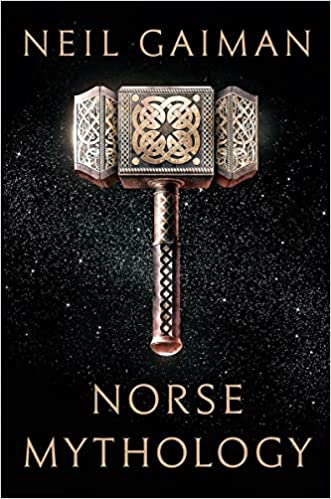
Another adaptation of Loki and Sif’s story was included in Neil Gaiman’s book “Norse Mythology,” which portrayed the Norse deities as generally tragic and petty. In the book, the myth of Loki and Sif is retold in a modern and accessible way, introducing readers to the complex world of Norse mythology.
Wrapping Up
The myth of Sif and Loki is a fascinating story that highlights the complex relationships between the gods in Norse mythology. It also serves as a cautionary tale about the consequences of our actions and the importance of prioritizing responsibilities over personal vanity.
The myth highlights the cyclical nature of life and the potential for growth and renewal even in the face of loss and difficulty. Ultimately, the story of Sif and Loki is a reminder of the enduring power of mythology to teach us valuable lessons about ourselves and the world around us.




